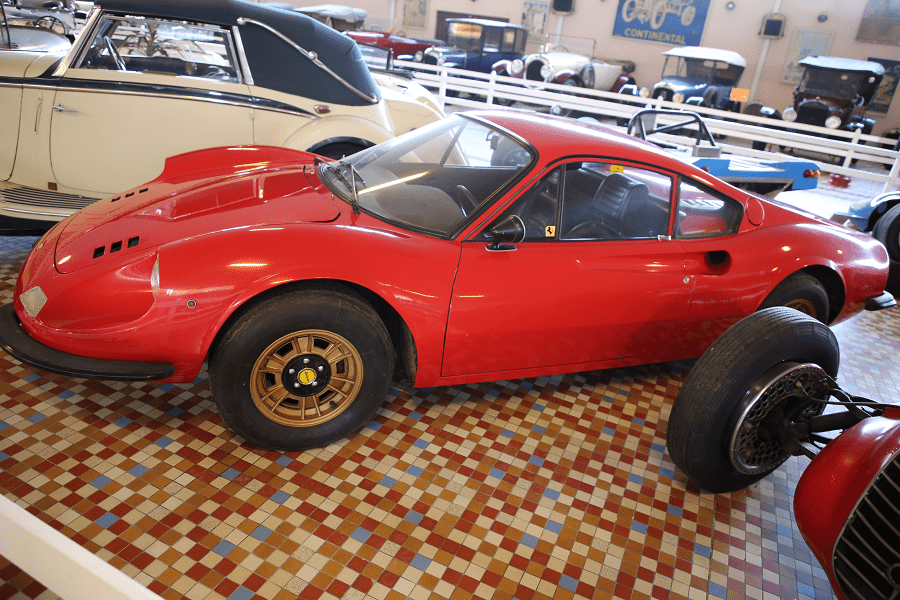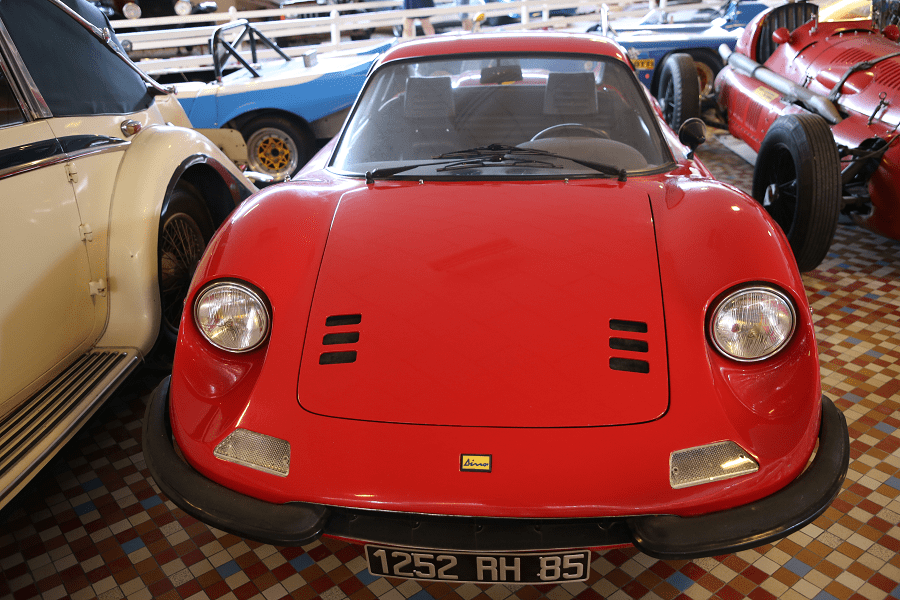Red Ferrari 246 GT Dino from 1970 with V6 (2418 cc). Max. speed: 210 km/h
The Dino 246 was the first automobile manufactured by Ferrari in high numbers. It is lauded by many for its intrinsic driving qualities and groundbreaking design. In 2004, Sports Car International placed the car at number six on its list of Top Sports Cars of the 1970s. Motor Trend Classic placed the 206/246 at number seven in their list of the 10 “Greatest Ferraris of all time”.
Dino 246 GT
Calls for more power were answered with the 2.4 L (2,419.20 cc) Dino 65° V6 engine, DOHC, 2 valves per cylinder, 9.0:1 compression ratio, iron block with alloy heads. It produced 195 PS (192 bhp; 143 kW) at 7,600 rpm and 226 N⋅m; 166 lbf⋅ft (23 kg⋅m) at 5,500 rpm of torque, and was available as a fixed-top GT coupé or, after 1971, an open Spyder GTS. A detuned American version had an exhaust air pump, and timing changes which resulted in 175 hp (130 kW). The GT had 3X2-barrel 40 DCNF/6 or 40 DCNF/7 Weber carburetors. For the 246 a new version of the Dinoplex ignition was deployed, the more compact Magneti Marelli AEC103A system.
The 246 Dino GT weighed 2,380 lb (1,080 kg). The 246 Dino GTS weighed 2,426 lb (1,100 kg). The body was now mostly made of steel to save cost. The 246 Dino had a 2.1-inch (53 mm) longer wheelbase than the 206, at 92.1 inches (2,340 mm). The height of the 246 was the same as the 206 at 43.9 inches (1,120 mm). The new car had a revised interior. Other differences were 2 rows of 7 vents on the slightly longer engine lid of the 246 instead of 6 and a fuel cap flap cover instead of the exposed one of the 206.
Dino 246 production numbered 2,295 GT coupés and 1,274 GTS spyders, the latter being built after the Series III revision from 1972 to 1974 only, for a total production run of 3,569 cars. Three series of the Dino were built, with differences in wheels, windshield wiper coverage, and engine ventilation. The Series I cars (also known as L series), 357 of which were built until the summer of 1970, used the same center-bolt wheels and “clapping hands” windscreen wipers as did the 206.
Series II cars (M series, built until July 1971 in 507 examples) received five-bolt Cromodora alloys and parallel moving wipers. The Series III cars (E series) had minor differences in gearing and fuel supply, and were built at a much higher rate as sales in the United States commenced with this version. 1,431 Series III GT coupés and 1,274 GTS removable top cars were built.













